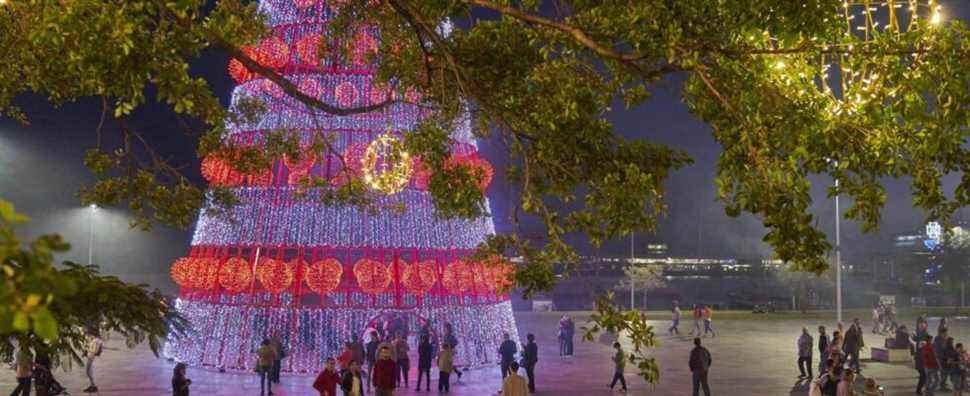This text is part of the special Plaisirs booklet
To bite into: a touristic-gastronomic story about the Christmas traditions that prevail in the Portuguese island. Move on, pastel de nata !
How good it smells in the thatched cottages of Madeira these days! It is that we prepare the traditional bolo de mel. In Funchal, capital of the main island of the Portuguese archipelago anchored off the coast of Morocco, less talented Madeiran people line up in front of the Fábrica Santo António, the most adorable pastry shop. In addition to getting this essential Christmas cake there, they will stock up on broas (cookies) by mel.
You read “ email ”And you think“ molasses ”or“ honey ”? Think again: it is more of a syrup, almost a caramel, made from the juice of sugar cane – a culture that for a time ensured the prosperity of “the island of eternal spring”.
In Porto da Cruz, at Engenhos do Norte, one of the oldest rum distilleries in the territory, the tasting manager, Carla Basílio, recalls that in the XVe century, Madeira was a major center of sugar production. “It was molded in the shape of a cone [le fameux « pain » de sucre] and was used for all kinds of bartering and trafficking, she said. It was exchanged for spices, fabrics, paintings. This “white gold” even attracted Christopher Columbus, who undoubtedly wanted to get involved in this trade to finance his obsession: to find the sea route to India. He also took the opportunity to marry the daughter of the governor of the neighboring island, Porto Santo!
From artists, especially Flemish, the wealthy merchants ordered works of art to decorate their quintas, the home of their plantations, as churches – a booty partly gathered today in the superb Museum of Sacred Art in Funchal.
Born 600 years ago, the bolo de mel is also a real local treasure. If each family has its recipe, it is prepared again and again with the famous syrup, star anise, cinnamon and cloves, and it is garnished with walnuts and flaked almonds. And “we do not especially cut it! says Raquel Mendonça, gourmet tour guide at Discovering Madeira. We break it into small bites and enjoy it with a glass of Madeira wine ”.
The nectar of chance
This wine is the other product on which the richness of this volcanic pebble is built. Three decades after having planted a Portuguese flag there, it was already exported to the New World.
Like port, Madeira wine is mutated, meaning that its fermentation is stopped by the addition of alcohol, but the comparison stops there. Its particularity is that it is then heated.
As Madeira was the essential stopover for ships crossing the Atlantic, its wine traveled a lot. “To make it better able to withstand the heat from the hold and the pitch, we thought about adding brandy, but one day, when opening a barrel that had made the round trip of a long trip, we noticed that it had improved, that the wine had turned into nectar! »Explains Raquel Mendonça.
This vinho da roda was so successful that we then sought to reproduce the conditions that had created it on dry land. “Some producers have started to roll their barrels by hand, others to expose them to the strong sun”, continues the guide.
Thus was born Madeira wine, which Victorian England so adored. In the golden age of its production, it was also the only wine authorized by the English to be exported to the American colonies. The vine then became the main crop on the island, and the Blandy, Leacock and other families established their wine “dynasties”.
Good to know, all Madeira wines are not the same. The one made with the sercial grape is dry; the verdelho gives a semi-dry wine; the bual, a semi-sweet wine; and the malvasia or malmsey, sweet. With the bolo de mel, Mme Mendonça recommends sipping a bual type wine, but we can also leave the last word to our palate!
